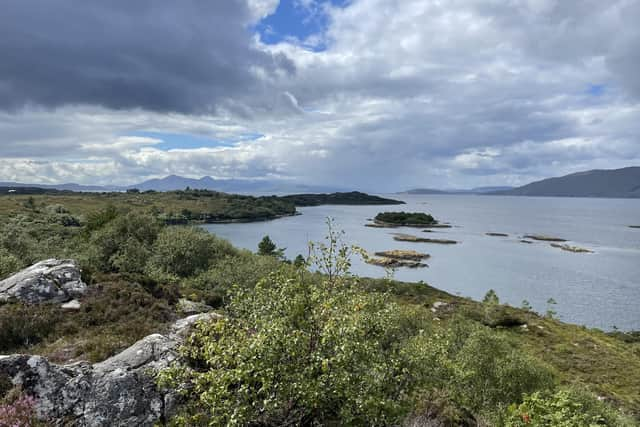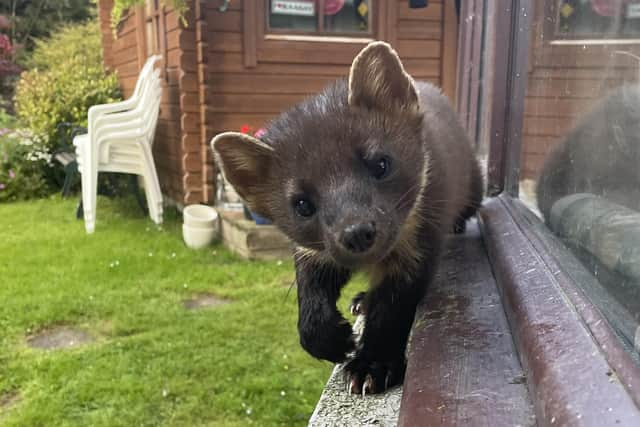COP15: Historic ‘30 by 30’ deal agreed at United Nations biodiversity summit, but lack of detail means it’s an ‘empty number’
Countries have pledged to protect 30 per cent of the world's lands, seas, coasts and inland waters by 2030 as part of a new plan to halt loss of species and reverse declines.
Measures agreed at the UN COP15 conference in Montreal also include a pledge to increase the flow of finance to developing nations to care for nature to $20 billion (£16.5bn) by 2025 and at least $30bn (£24.7bn) by the end of the decade.
Advertisement
Hide AdAdvertisement
Hide AdThere are 2030 targets to halve global food waste, excess nutrients and risks posed by pesticides, reduce to “near zero” the loss of areas of wildlife-rich habitat and reduce government subsidies that harm nature by $500bn (£411.7bn) a year.
They are among a series of 23 targets in the Kunming-Montreal Global Biodiversity Framework that have been negotiated in the Canadian city over the past two weeks, as well as four long-term goals to protect the natural world by 2050.
Scottish ministers have already committed to protecting 30 per cent of Scotland’s land and seas by 2030 and to restore biodiversity by 2045, publishing a draft of the new biodiversity strategy last week.
The international deal has been welcomed by Scottish environmental groups, but they say countries must ensure conservation and restoration efforts are effective.
Deborah Long, chief officer for the Scottish Environment Link coalition, said: “This is an historic deal that should kick-start our efforts to protect nature in Scotland and around the world.


“This is a crucial decade to protect our biodiversity, and the global target to protect 30 per cent of land and sea gives us a clear target to collectively work towards.”
Ms Long added: “Of course, targets are important, but what really matters is delivery. The 30 by 30 target is an opportunity for us to restore nature properly.
“It cannot simply be about expanding and improving the network of protected sites, but also about taking a more strategic approach with our protected sites as key nodes of wider nature networks, where species and habitats can thrive and become resilient to climate change.”
Advertisement
Hide AdAdvertisement
Hide AdSimon Jones, director of environment at Loch Lomond and the Trossachs National Park Authority, warned a history of over-grazing, pollution, invasive non-native species and a rapidly changing climate had left many of the country’s iconic habitats and species in danger and “urgent, bold action is required”.


He said: “Biodiversity is declining faster than at any time in human history and, together with the climate emergency, these twin crises are genuine threats to our future existence as a species – let alone the fate of millions of other species on the planet.
“Our natural environment forms the basis of the life-support system that underpins the fabric of our society, health, wealth and economies. If we want a healthy future, we need healthy nature.”
International campaign group Greenpeace has branded the conference a flop overall, saying it has failed to deliver the ambition, tools or finance necessary to stop mass extinction of species.
They also warned corporate carbon offsetting schemes, where climate polluters can compensate for their emissions by funding an equivalent carbon dioxide saving elsewhere, could create more damage than they solve.
An Lambrechts, head of the Greenpeace delegation at COP15, said: “The 30 by 30 target, to protect at least 30 per cent of land and of sea by 2030, has successfully made it in. But it is stripped-down, without essential qualifiers that exclude damaging activities from protected areas. As is, it is just an empty number, with protections on paper, but nowhere else.”
She added: “Corporate schemes like nature-based solutions and offsets leeched on to the UN biodiversity talks from start to finish.
“These are false solutions that may prove to be costly mistakes. The scandals and greenwashing you see in carbon offsetting today are what’s on the menu for biodiversity tomorrow.”
Comments
Want to join the conversation? Please or to comment on this article.